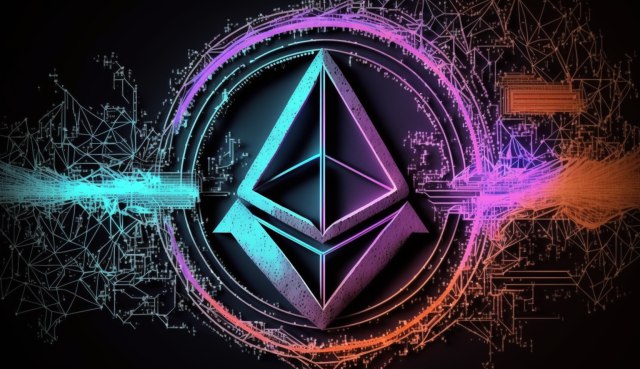This week, Ethereum’s most awaited Shanghai upgrade will be completed, enabling stakers to withdraw their ETH from the blockchain and essentially bringing to a close the network’s two-year transition to the proof of stake (P0S) consensus mechanism.
Ethereum began implementing the PoS model back in 2020, allowing users to stake their ETH to approve on-chain transactions and receive newly minted ETH in return. Data on Blockchain explorer Etherscan indicates that over $32 billion in ETH has been deposited in the Ethereum blockchain.
But these depositors are still not able to access their funds. However, the Shanghai upgrade, set to go live on April 12, is looking to change that.

CypherMindHQ.com Artificial Intelligence Crypto Trading System - Surpass the competition with this cutting-edge AI system! Utilize the prowess of innovative algorithms and amplify your crypto trading strategies with CypherMindHQ. Learn more today!
So what does this update mean for the Ethereum network, the stakers, and the broader crypto industry?
What Shanghai Upgrade Mean for Stakers
Ethereum users who staked ETH through intermediaries such as Coinbase and Lido Finance won’t be required to do anything once the upgrade goes live besides waiting. Their staked ETH, along with the earned rewards, will be availed for withdrawal by those intermediaries on different dates after the successful completion of the Shanghai upgrade.
Lido Finance, the largest staking provider, announced last month that it will introduce withdrawal capability in June after conducting a series of safety checks and audits.
On the other hand, Coinbase has not given users of its staking service the exact date when it plans to start supporting staked ETH withdrawals. The company previously suggested that it might take several months.
As for Ethereum validators who staked directly on the blockchain may be able to withdraw within a few days. First, they will be required to provide a withdrawal address which most of them already submitted when depositing their ETH on the network.
Independent stakers can then go for full or partial withdrawal. Regarding partial withdrawal, validators will only receive rewards generated rather than the minimum 32 ETH they deposited to begin validating transactions. As for full withdrawal, the validators will receive their 32 ETH deposit and all the rewards earned, ending their role as validators.
What will Shanghai Upgrade Mean for the Ethereum Ecosystem?

CypherMindHQ.com Artificial Intelligence Crypto Trading System - Outpace the competition with this high-end AI system! Leverage the capabilities of progressive algorithms and enhance your crypto trading performance with CypherMindHQ. Learn more today!
While most individual stakers consider Shanghai a notable event, the upgrade won’t change how Ethereum users interact with the network.
Head of product at Ethereum layer-2 network Mantle, Jacon Cantele, has also said that Shanghai will not alter the economics of the Ethereum blockchain, arguing that many users have already been selling staked ETH for some time since most ETH gets staked through protocols that have liquid staking tokens such as Rocket Pool and Lido.
What Will Shanghai Mean for the Wider Crypto Industry?
While Shanghai does not appear to bring any significant changes to the Ethereum network, the upgrade will likely attract interest from various regulators, including the Securities and Exchange Commission (SEC).
Since the collapse of FTX last November, the United States regulators have been cracking down on crypto firms, and most recently, they have targeted those that offer staking services. Two months ago, The SEC ordered the crypto exchange Kraken to pay about $30 million for allegedly offering unlicensed staking services.
At the time, Kraken’s main competitor Coinbase argued that its staking service never determined what its users would earn, unlike Kraken, and therefore urged the SEC not to deem it a yield product. Nonetheless, the agency delivered a Wells Notice to Coinbase about a week ago, claiming that the company’s staking service is also an unregistered security. The notice means the SEC would soon level an enforcement action against the crypto exchange.
Meanwhile, since Ethereum transitioned to the PoS mechanism last year, SEC chairman Gary Gensler has constantly claimed that all PoS networks should be deemed securities because of their reward mechanisms.
Attorney Michael Selig says the SEC, which for a long time has described a ‘security’ as an investment made while relying on the efforts of others to generate profits, will likely use the Shanghai implementation as evidence that supposedly shows the Ethereum core developers honoring a securities arrangement between them and the ETH stakers.
That being said, whether the regulator would go after the second-largest blockchain after rolling out its Shanghai upgrade on Wednesday remains to be seen.



